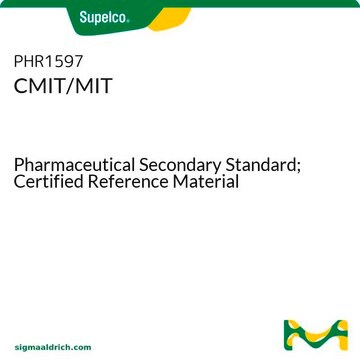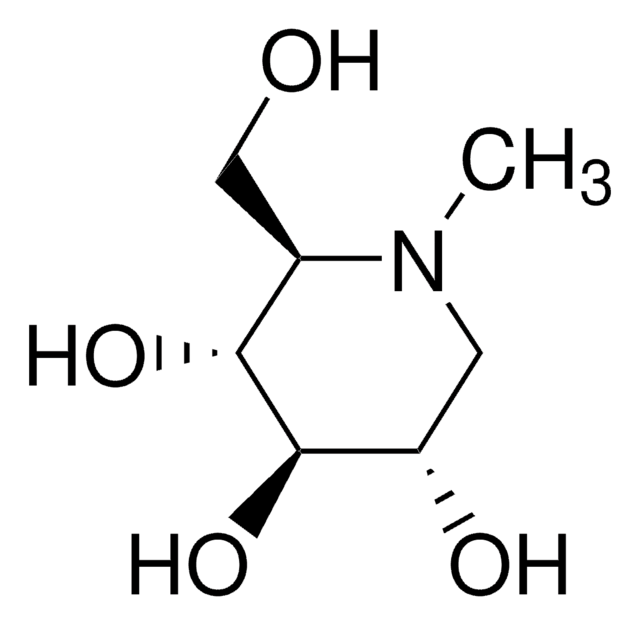M6045
2-Methyl-4-isothiazolin-3-on -hydrochlorid
≥99%
Synonym(e):
MIT, Methylisothiazolinon -hydrochlorid
About This Item
Empfohlene Produkte
Qualitätsniveau
Assay
≥99%
Wirkungsweise
protein synthesis | interferes
Lagertemp.
2-8°C
SMILES String
Cl[H].CN1SC=CC1=O
InChI
1S/C4H5NOS.ClH/c1-5-4(6)2-3-7-5;/h2-3H,1H3;1H
InChIKey
SJXPQSRCFCPWQQ-UHFFFAOYSA-N
Suchen Sie nach ähnlichen Produkten? Aufrufen Leitfaden zum Produktvergleich
Allgemeine Beschreibung
Anwendung
- als zytotoxische Substanz zur Untersuchung seiner Wirkung auf Epithelzellen der Bronchien (BEAS-2B-Zellen) und seiner Rolle beim apoptotischen Zelltod
- zur Untersuchung der Auswirkungen der Tyrosin-Phosphorylierung auf die Aktivität der fokalen Adhäsionskinase (FAK) in der Entwicklung von neuralen Axonen und Dendriten.
Biochem./physiol. Wirkung
Signalwort
Danger
H-Sätze
Gefahreneinstufungen
Acute Tox. 3 Oral - Aquatic Acute 1 - Aquatic Chronic 1 - Eye Dam. 1 - Skin Corr. 1A - Skin Sens. 1
Zusätzliche Gefahrenhinweise
Lagerklassenschlüssel
6.1A - Combustible acute toxic Cat. 1 and 2 / very toxic hazardous materials
WGK
WGK 3
Flammpunkt (°F)
Not applicable
Flammpunkt (°C)
Not applicable
Persönliche Schutzausrüstung
Eyeshields, Faceshields, Gloves, type P3 (EN 143) respirator cartridges
Analysenzertifikate (COA)
Suchen Sie nach Analysenzertifikate (COA), indem Sie die Lot-/Chargennummer des Produkts eingeben. Lot- und Chargennummern sind auf dem Produktetikett hinter den Wörtern ‘Lot’ oder ‘Batch’ (Lot oder Charge) zu finden.
Besitzen Sie dieses Produkt bereits?
In der Dokumentenbibliothek finden Sie die Dokumentation zu den Produkten, die Sie kürzlich erworben haben.
Kunden haben sich ebenfalls angesehen
Unser Team von Wissenschaftlern verfügt über Erfahrung in allen Forschungsbereichen einschließlich Life Science, Materialwissenschaften, chemischer Synthese, Chromatographie, Analytik und vielen mehr..
Setzen Sie sich mit dem technischen Dienst in Verbindung.













